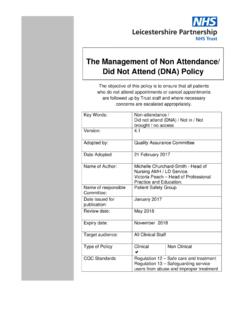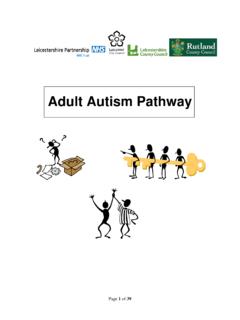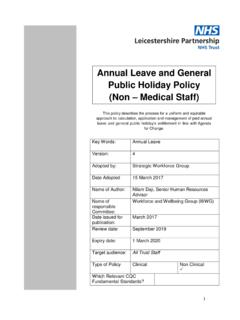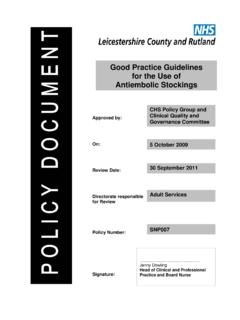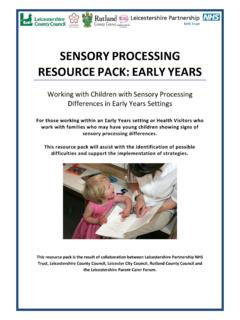Transcription of Umbilical Granuloma in babies
1 1 Families, Young People and Children s ServicesUmbilical Granuloma in babiesInformation for parents and carerswith you every step of the wayWith thanks to Tameside Hospital NHS Foundation Trust for the use of the picture Leicestershire Partnership NHS TrustBridge Park PlazaBridge Park RoadThurmastonLeicesterLE4 8 PQTel: 0300 3000 007 Email: is an Umbilical Granuloma ?An Umbilical Granuloma is an overgrowth of tissue during the healing process of the belly button (umbilicus). It usually looks like a soft pink or red lump and often is wet or leaks small amounts of clear or yellow fl uid. It is most common in the fi rst few weeks of a baby's life. The overgrowth of tissue is relatively common and is not dangerous but does need care of the umbilicus/belly button Keep the belly button clean and dry Cleanse belly button with soap and warm boiled water if it gets soiled with urine or faeces Expose the belly button to the air by rolling back the top of the nappy when the opportunity allowsHow is an Umbilical Granuloma treated?
2 If there is an Umbilical Granuloma and no obvious infection, then your GP or health visitor may suggest salt treatment. This has been found to be a very effective and safe treatment, which you can do at home. If the salt treatment is not effective occasionally silver nitrate treatment will be suggested. This has to be done by the GP. How to do the salt treatmentWash and clean your hands or use plastic gloves prior to starting the procedures outlined below Apply a small pinch of table or cooking salt onto the Umbilical Granuloma . If you are unsure ask your health visitor to show you how much is required. Cover the area with a gauze dressing 'swab' and hold in place for 10 -30 minutes. This may be easiest to do when your baby is asleep. Now clean the site using a clean gauze dressing soaked in warm boiled water. You should repeat the procedure twice a day for at least two approximately two or three days you should notice that the Granuloma reduces in size, possibly changing colour as it dries off and gradually to do if the salt treatment is not effective or an infection is suspectedIf the Umbilical Granuloma does not respond to treatment after one week, see your GP or health visitor.
3 The health professional will consider the need for further treatment. If your baby's belly button is showing signs of infection such as redness of the surrounding skin or possibly having an offensive smell and discharge or your baby has a fever, contact your GP for an appointment as soon as possible. Further informationThis leafl et was produced by the health visiting service at Families, Young People and Children's Division of Leicestershire Partnership NHS Choices - information about the care of newborn babies If you have any further queries please contact your health visitor, GP or midwife on the contact numbers which you have in your baby's 'red book'.This leafl et is evidence based. References that support this guidance:1. North Bristol NHS Trust - Care of the Umbilical Granuloma , December 2005 2. 3. Information for parents and carers - Umbilical Granuloma in babies (2012) - Royal United Bath Hospital4.
4 Care of the infant with an Umbilical Granuloma (2013) Tameside Hospital NHS Foundation Trust 34 Date implemented: September 2011 Review date: September 2013 Leafl et No. 118 - Edition 1 Date implemented: April 2014 Review date: April 2016 Leafl et No. 292 If you need this information in another languageor format please telephone 0116 295 0994 oremail: BengaliTraditional ChineseGujaratiHindiPolishPunjabiSomaliU rduArabic0116 295 09940116 295 09940116 295 09940116 295 09940116 295 09940116 295 09940116 295 09940116 295 09940116 295 0994

